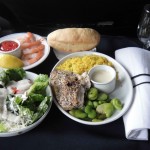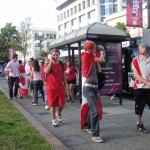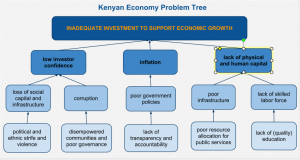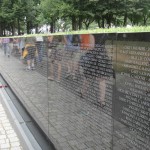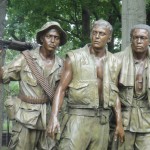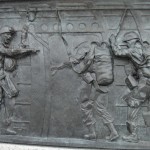After an awesome three weeks of playing international development professional, I headed home to Chicago. The Midwest in summer is amazing. There are more street fairs and outdoor events than any human could possibly attend. Art shows by day, free concerts every night, food, music and film festivals, fireworks off Navy Pier, hundreds of theater venues and thousands of bar restaurants vying for sidewalk seating. We Chicagoans only have a few short months of outdoor time every year, and we will milk every minute!
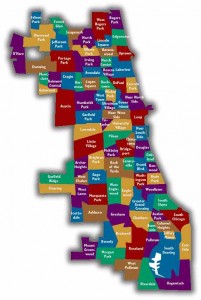 Biking down Lake Shore past volleyball and softball leagues, party boats, family picnics and bums playing chess, I miss this sweetly sinful city. I miss the art, culture, food, danger. I love Monterey, but it’s homogeneous like tapioca. Chicago’s my safety blanket – a tapestry of segregated ethnic identities that are sewn together into a patchwork quilt. In Chicago, you can drive through Ukrainian, Chinese, Russian, Thai, Orthodox Jewish, Indian, Mexican, Pakistani, Irish, Italian, and Serbian areas, along with another few dozen I don’t even know about. Eat authentic food from any region of the world, catch a free lecture and a five star meal or a foreign film and dinner from the tamale guy(s) (stalk them on twitter at tamaletracker).
Biking down Lake Shore past volleyball and softball leagues, party boats, family picnics and bums playing chess, I miss this sweetly sinful city. I miss the art, culture, food, danger. I love Monterey, but it’s homogeneous like tapioca. Chicago’s my safety blanket – a tapestry of segregated ethnic identities that are sewn together into a patchwork quilt. In Chicago, you can drive through Ukrainian, Chinese, Russian, Thai, Orthodox Jewish, Indian, Mexican, Pakistani, Irish, Italian, and Serbian areas, along with another few dozen I don’t even know about. Eat authentic food from any region of the world, catch a free lecture and a five star meal or a foreign film and dinner from the tamale guy(s) (stalk them on twitter at tamaletracker).
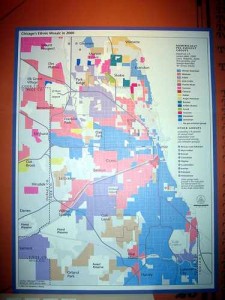 For the young professional (hipster?), if you’re bored of watching burgeoning bands in basement venues with exposed brick walls and cash-only bars, there’s always the soap opera that is Chicago politics to keep you entertained – with such storied debaucherous characters running the city, you’d think we lived in Gotham. Current sagas include: Rod Blagojevich starring in Still Not Guilty?! The sequel, Rahm Emanuel in Replacing Daley: Dreams of a Battered City, and Toni Preckwinkle: Striking Fear into the Hearts of Scoundrels.
For the young professional (hipster?), if you’re bored of watching burgeoning bands in basement venues with exposed brick walls and cash-only bars, there’s always the soap opera that is Chicago politics to keep you entertained – with such storied debaucherous characters running the city, you’d think we lived in Gotham. Current sagas include: Rod Blagojevich starring in Still Not Guilty?! The sequel, Rahm Emanuel in Replacing Daley: Dreams of a Battered City, and Toni Preckwinkle: Striking Fear into the Hearts of Scoundrels.
I can almost forget the 100-degree-colder winter weather (no exaggeration, Chicago can get down to -30F with windchill), the months of miserable hibernation when leaving the house knocks the air out of your chest and you can feel your bone marrow pulsing. Almost. It’s the only thing that keeps me away (and the rents so low). But once I’m a jet-setting environmental policy guru, I’ll be able to live out my snowbird fantasies, splitting time between Chicago and California.

Because as much as I love the left coast, there’s something endearing about beefy sports fans full of hot dogs and hometown pride, and a city whose history is full of hubris and horror, and the food pyramid is built from beer and cheese.
The Midwest will always be a touchstone for me, and it’s nice to remember my roots as I leave all too soon for my summer job in Canada, working media coordination for a renewable energy nonprofit.
